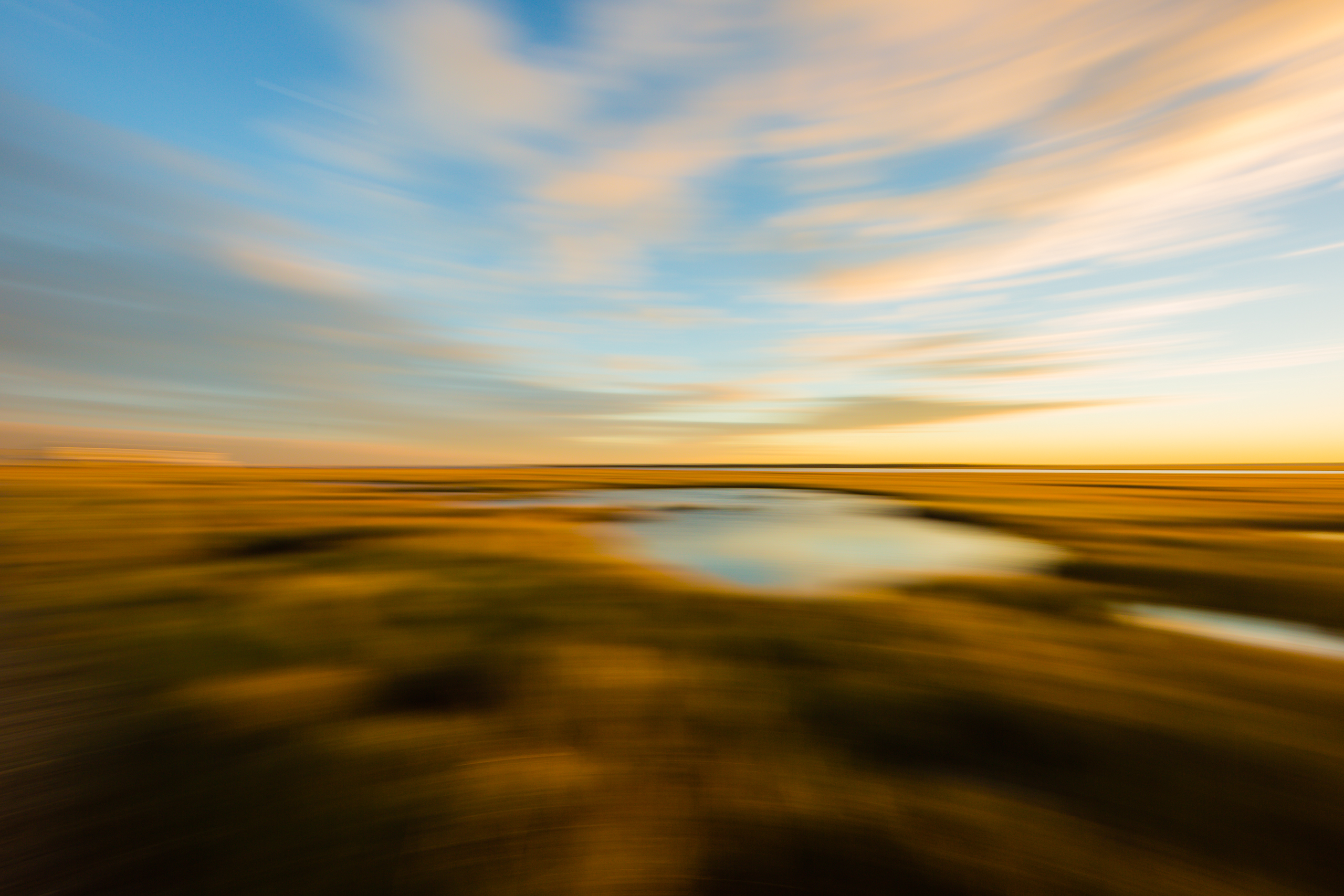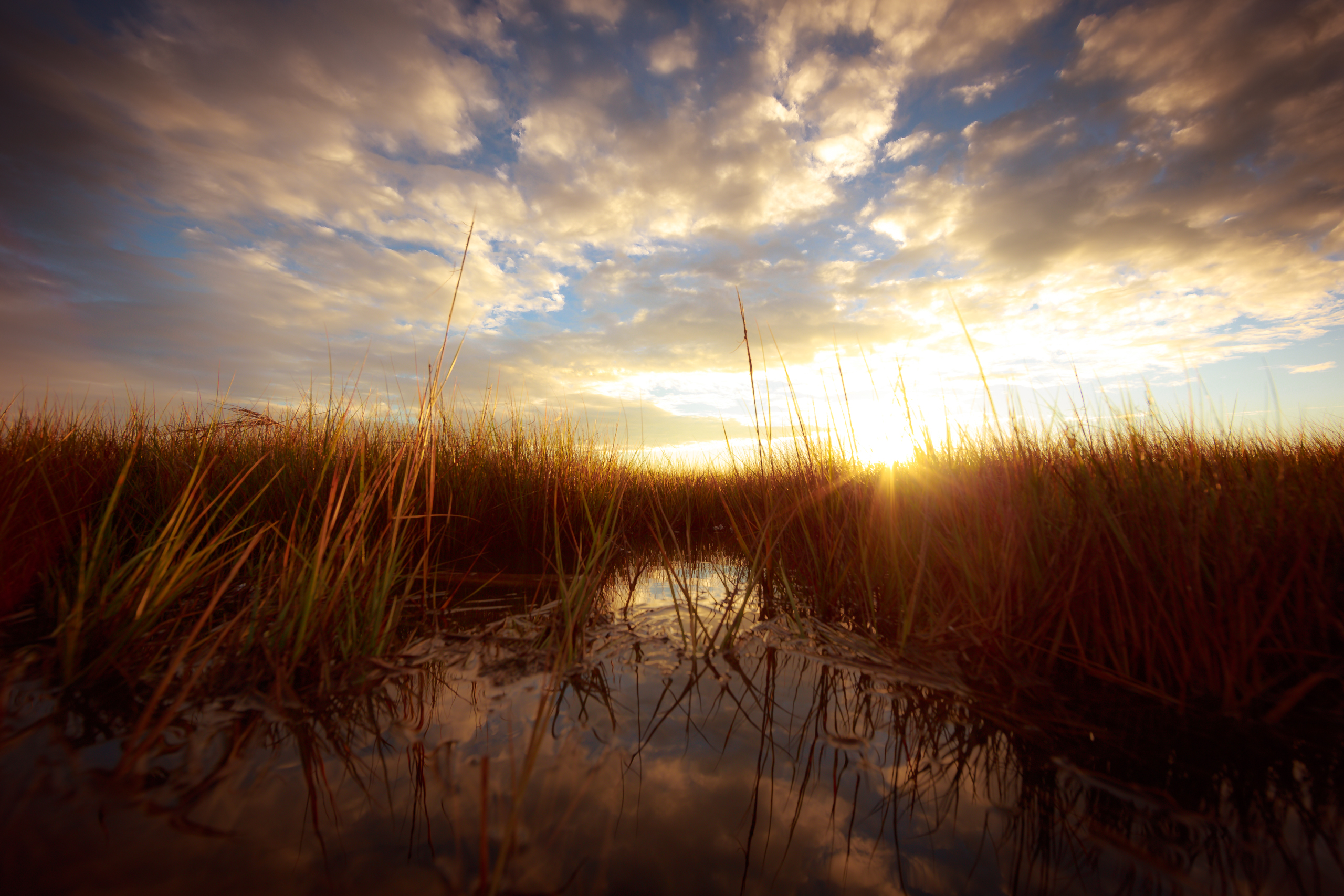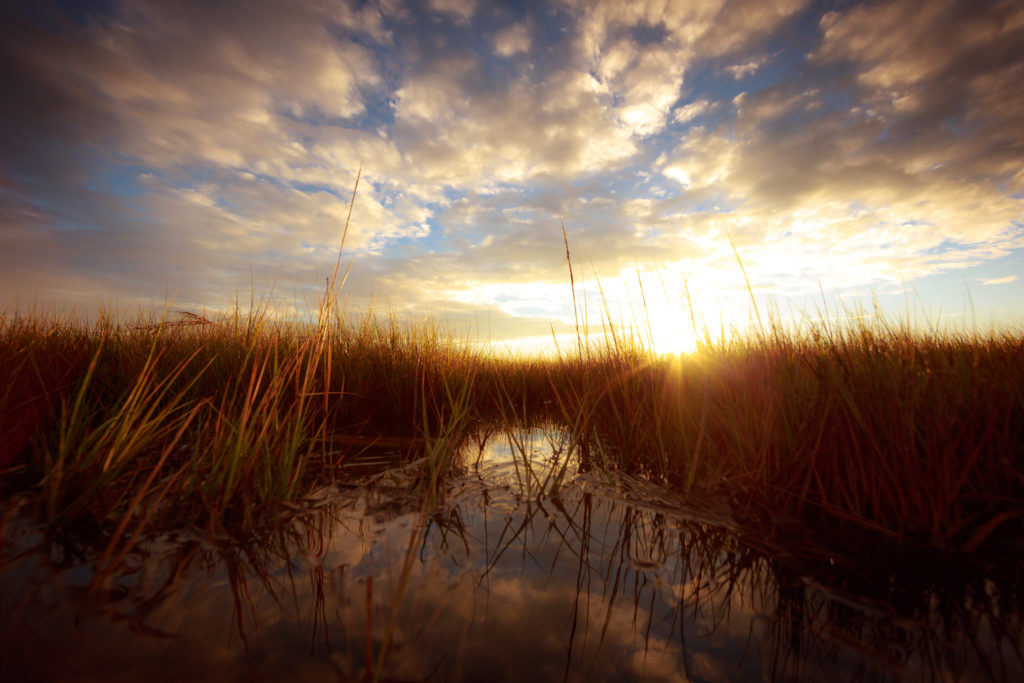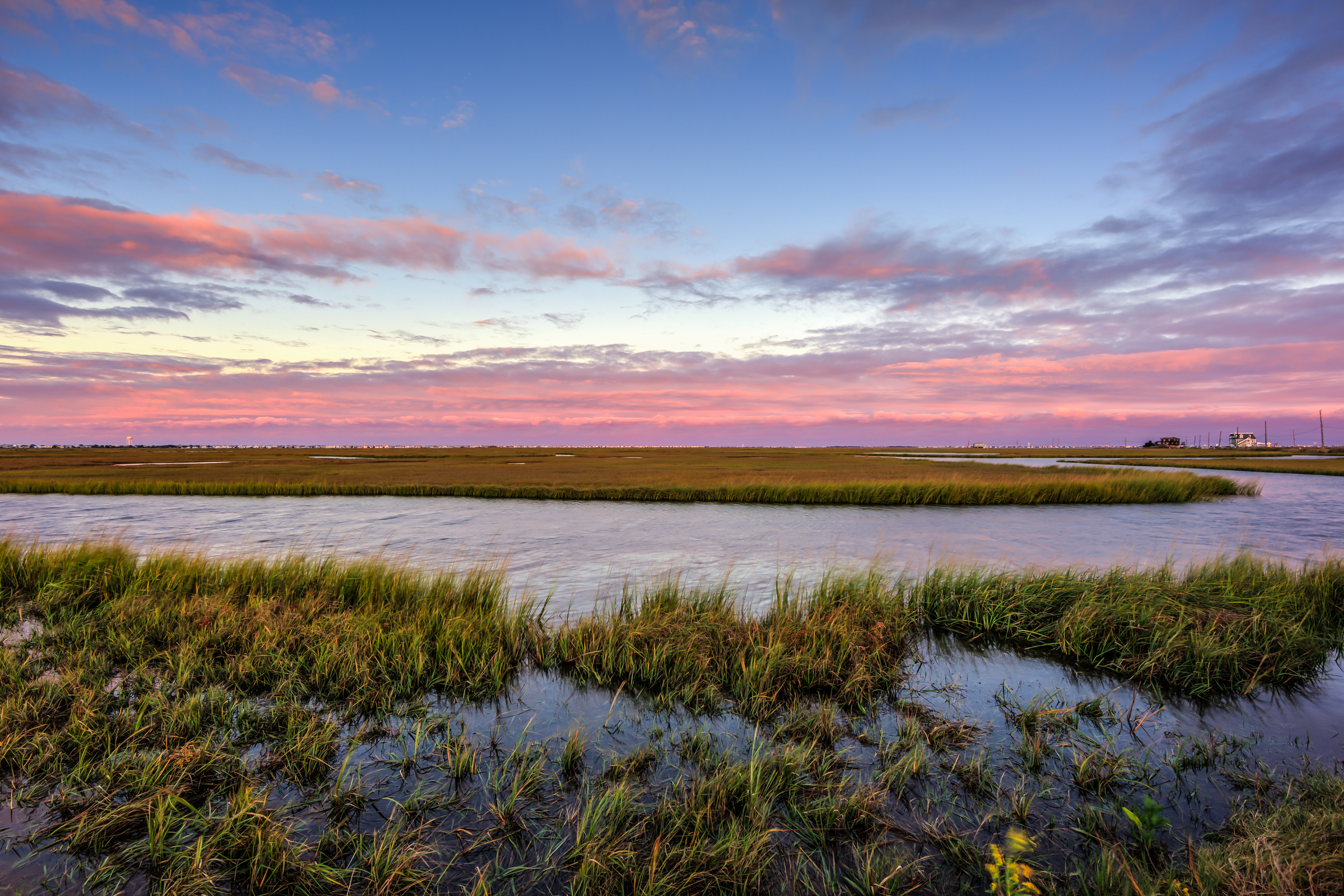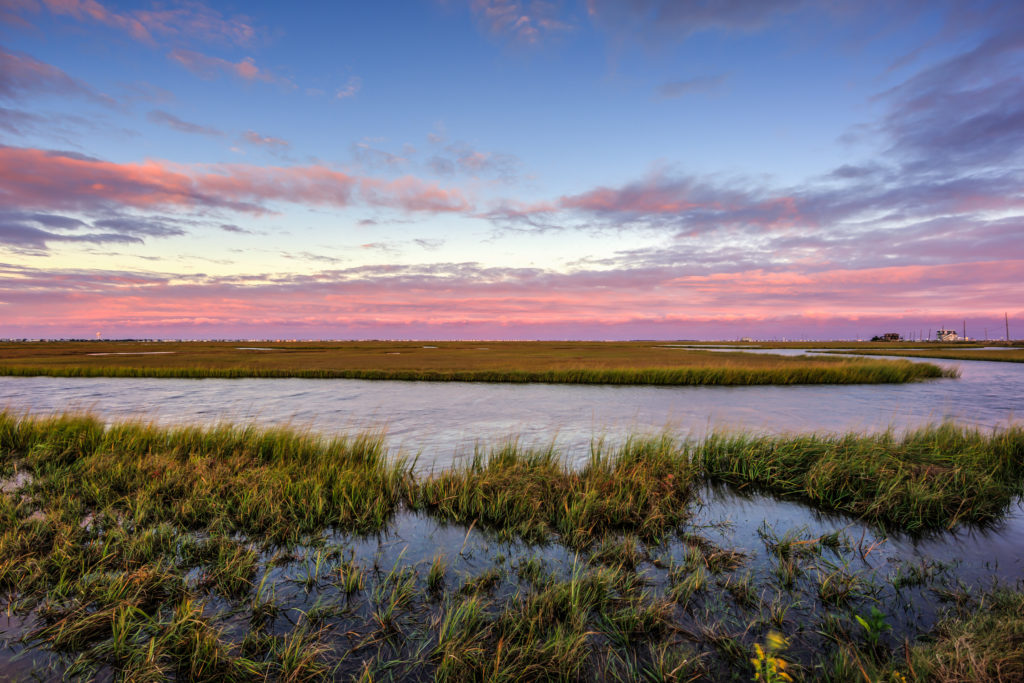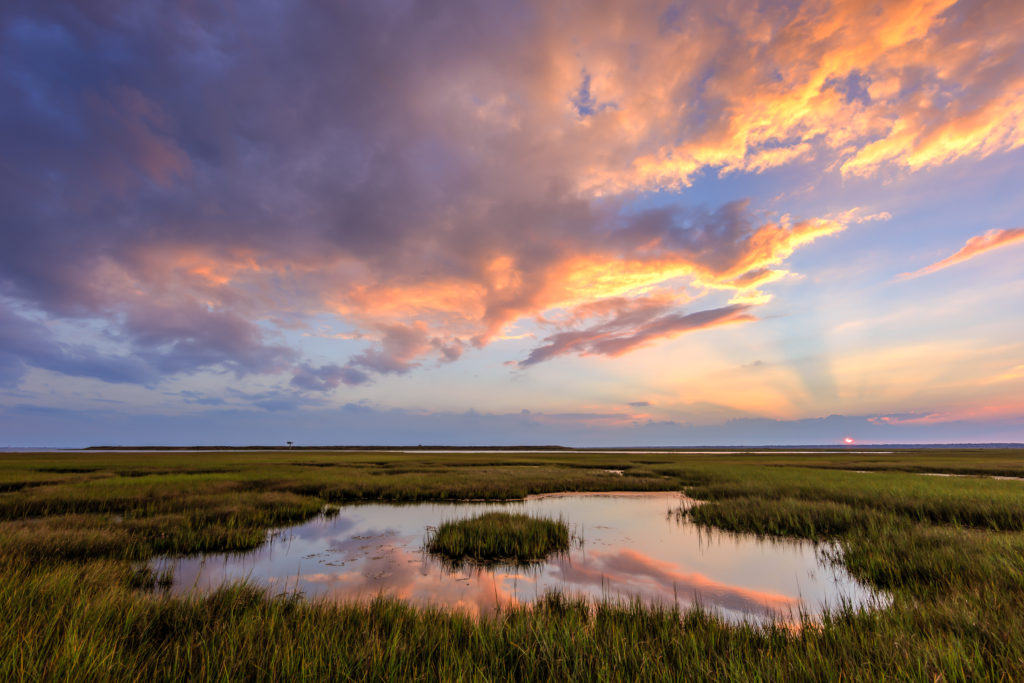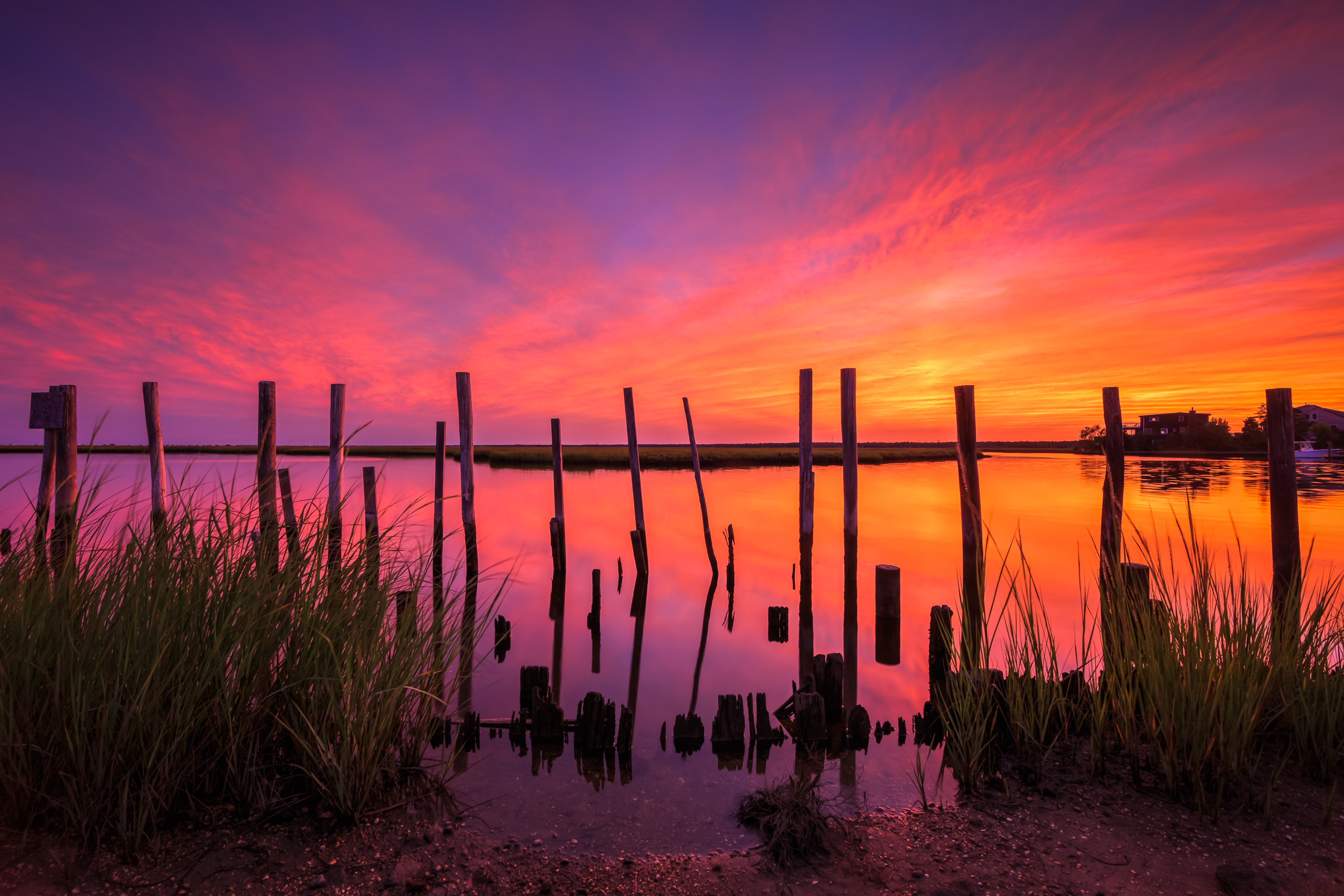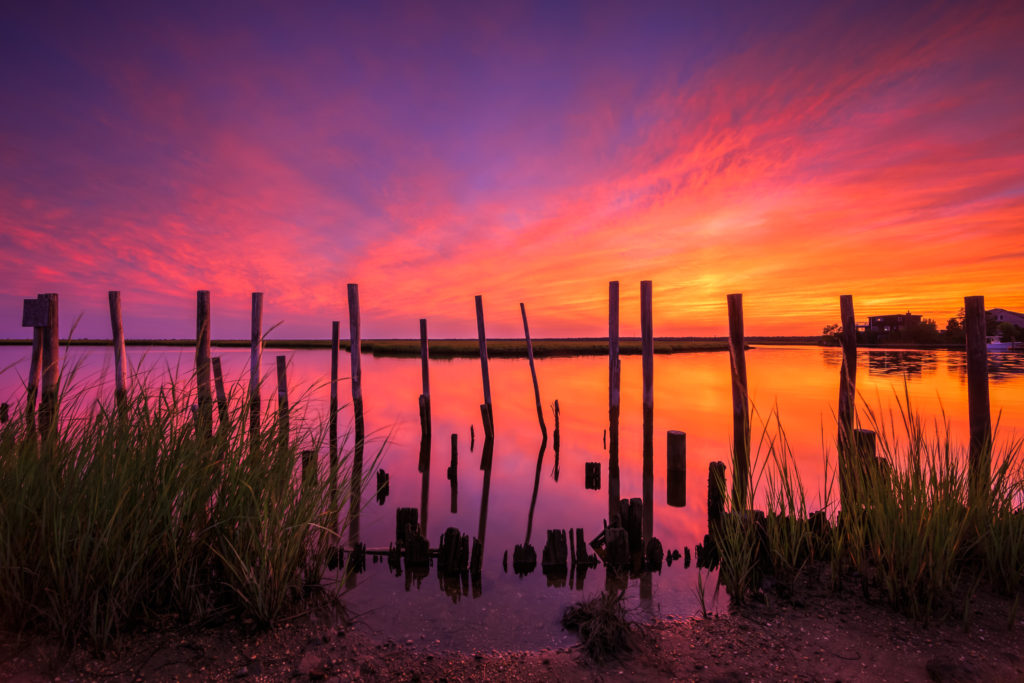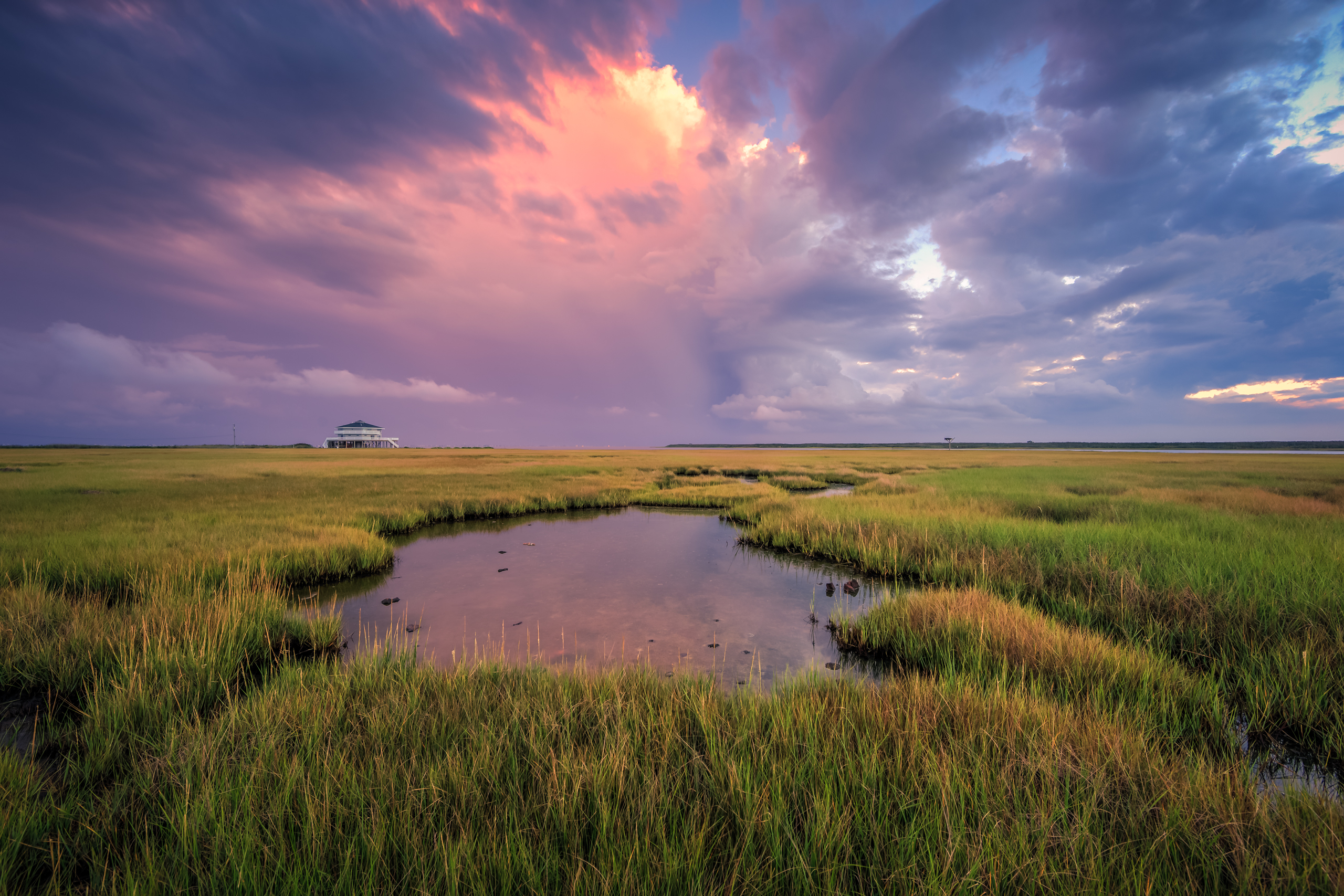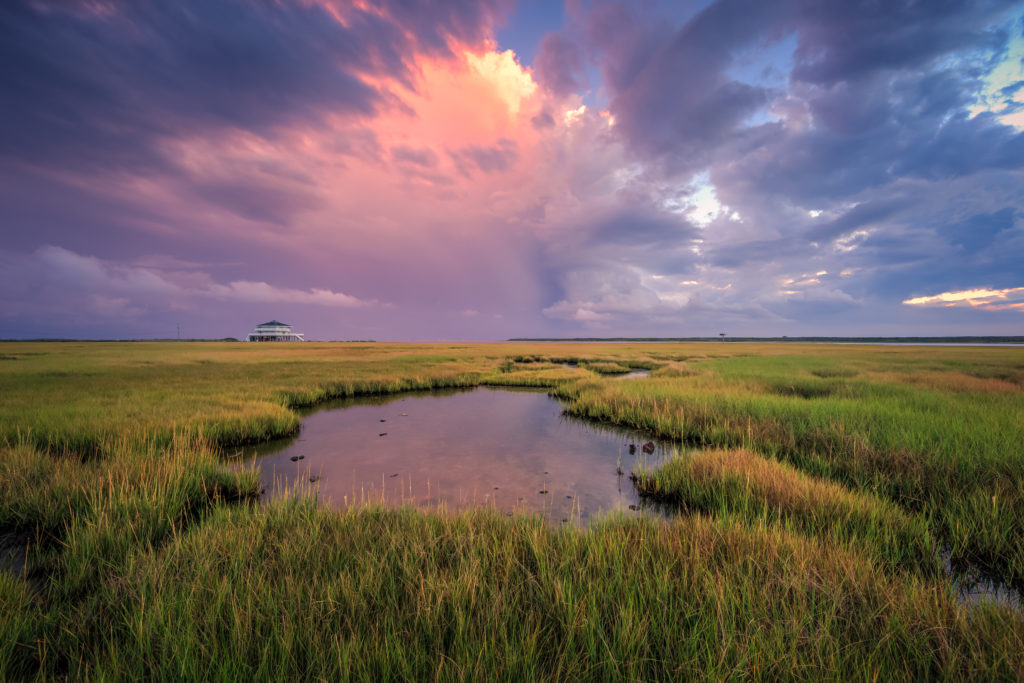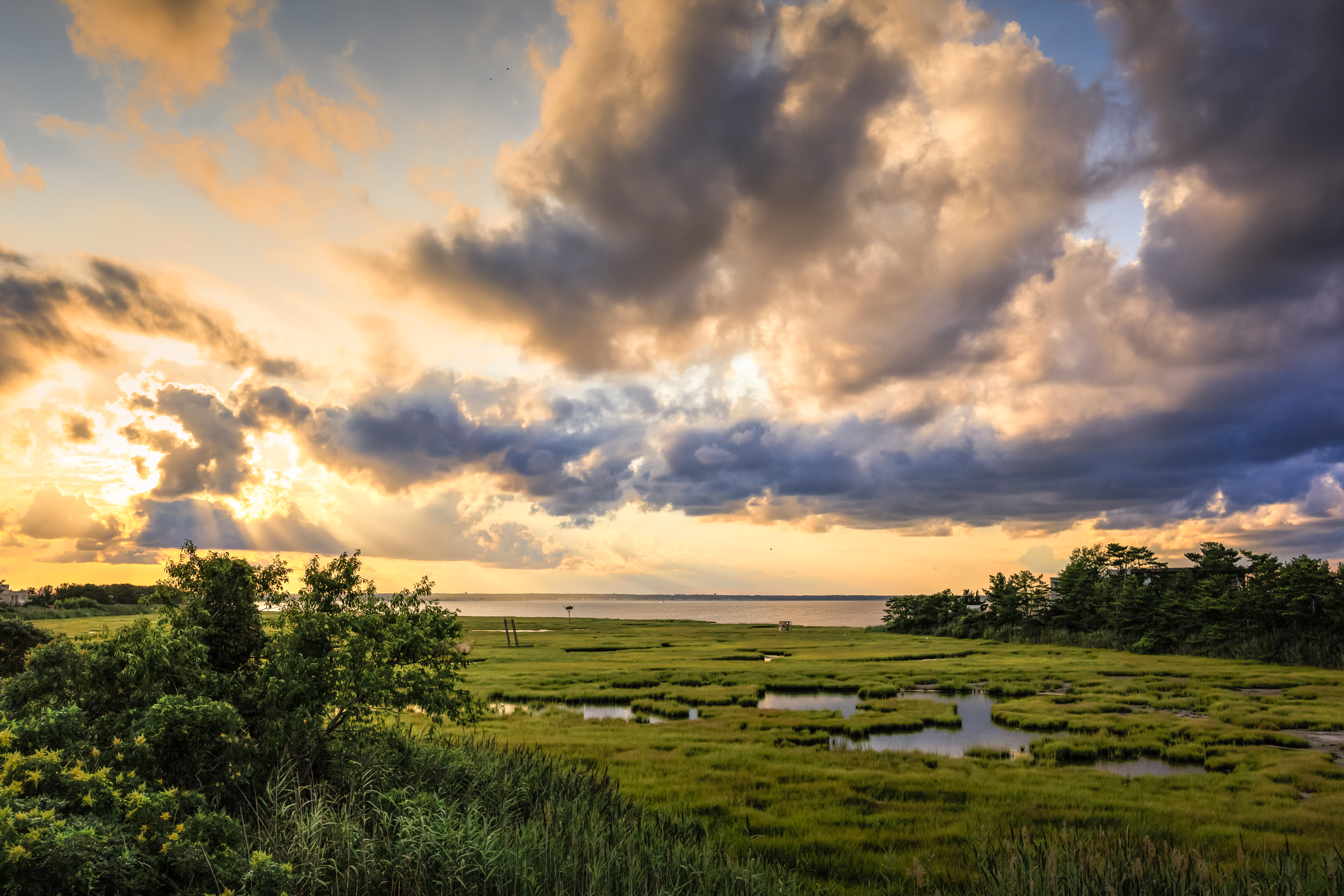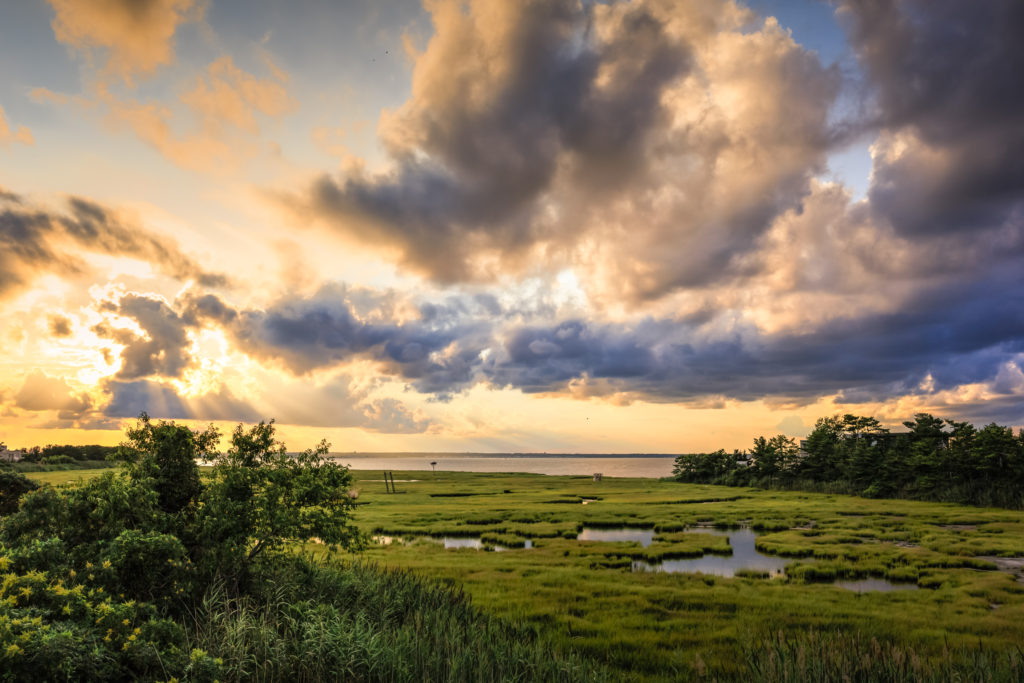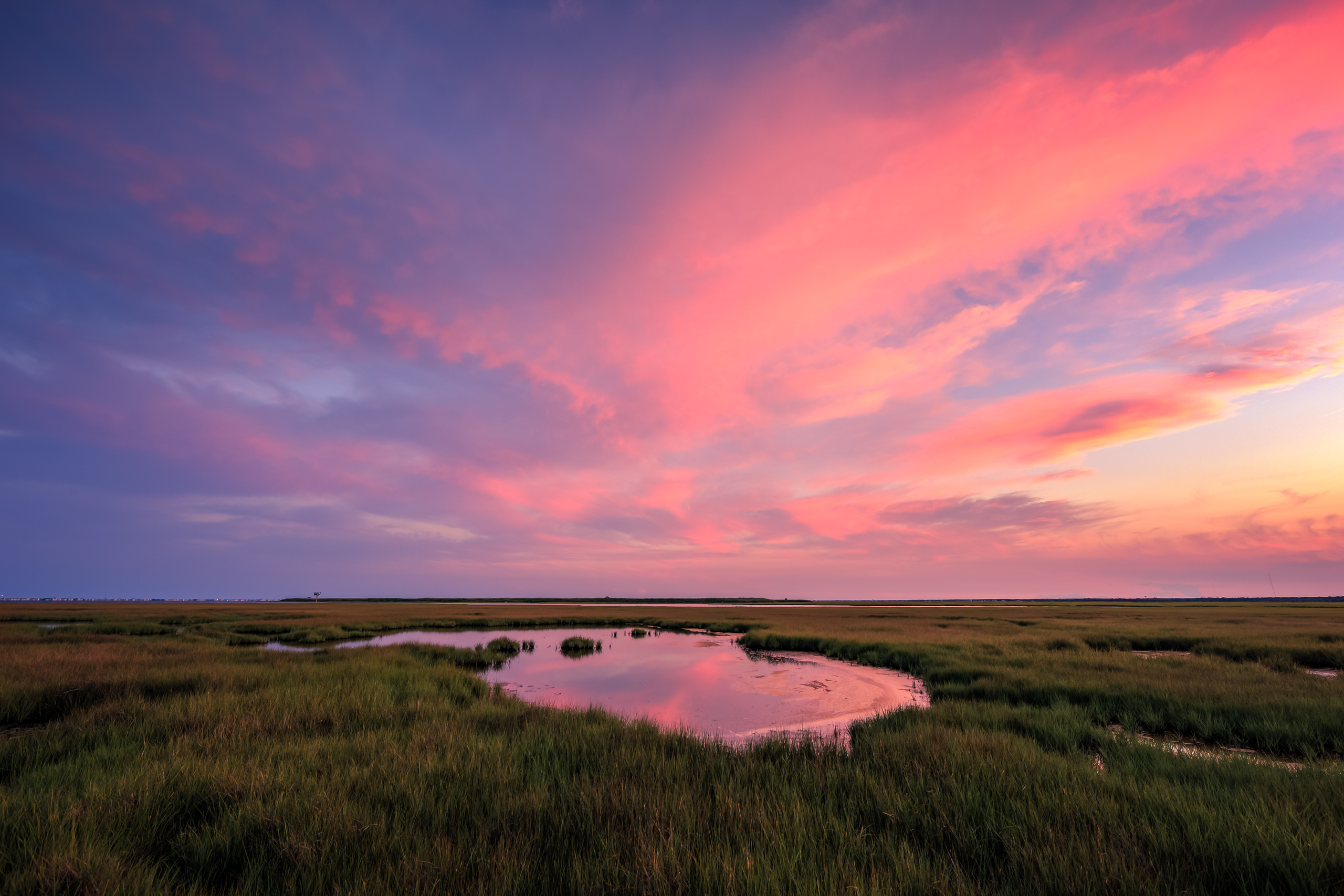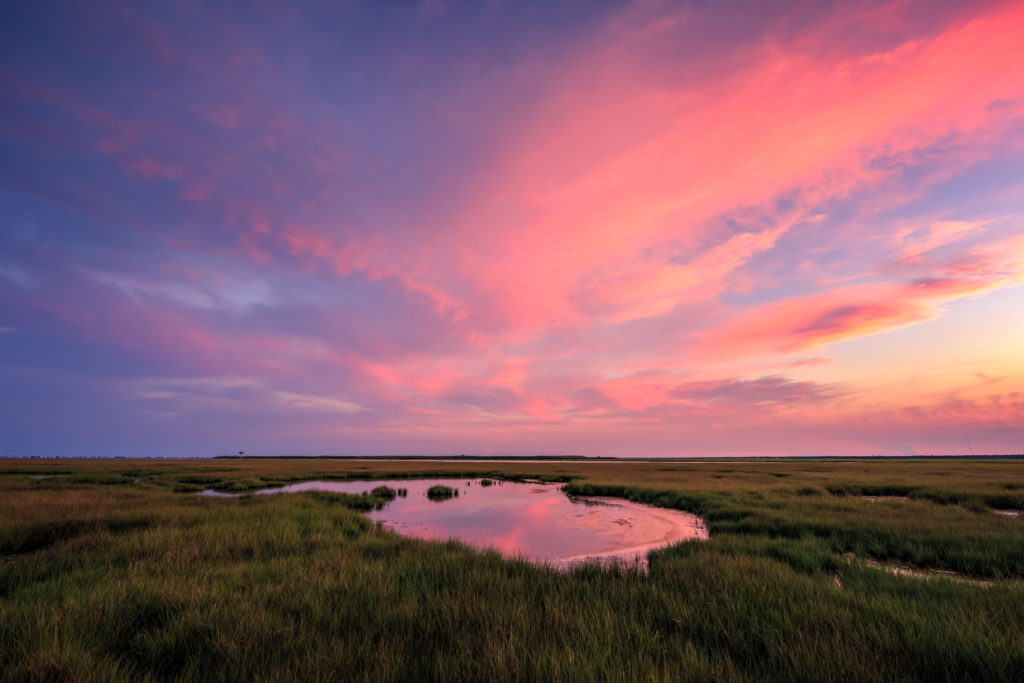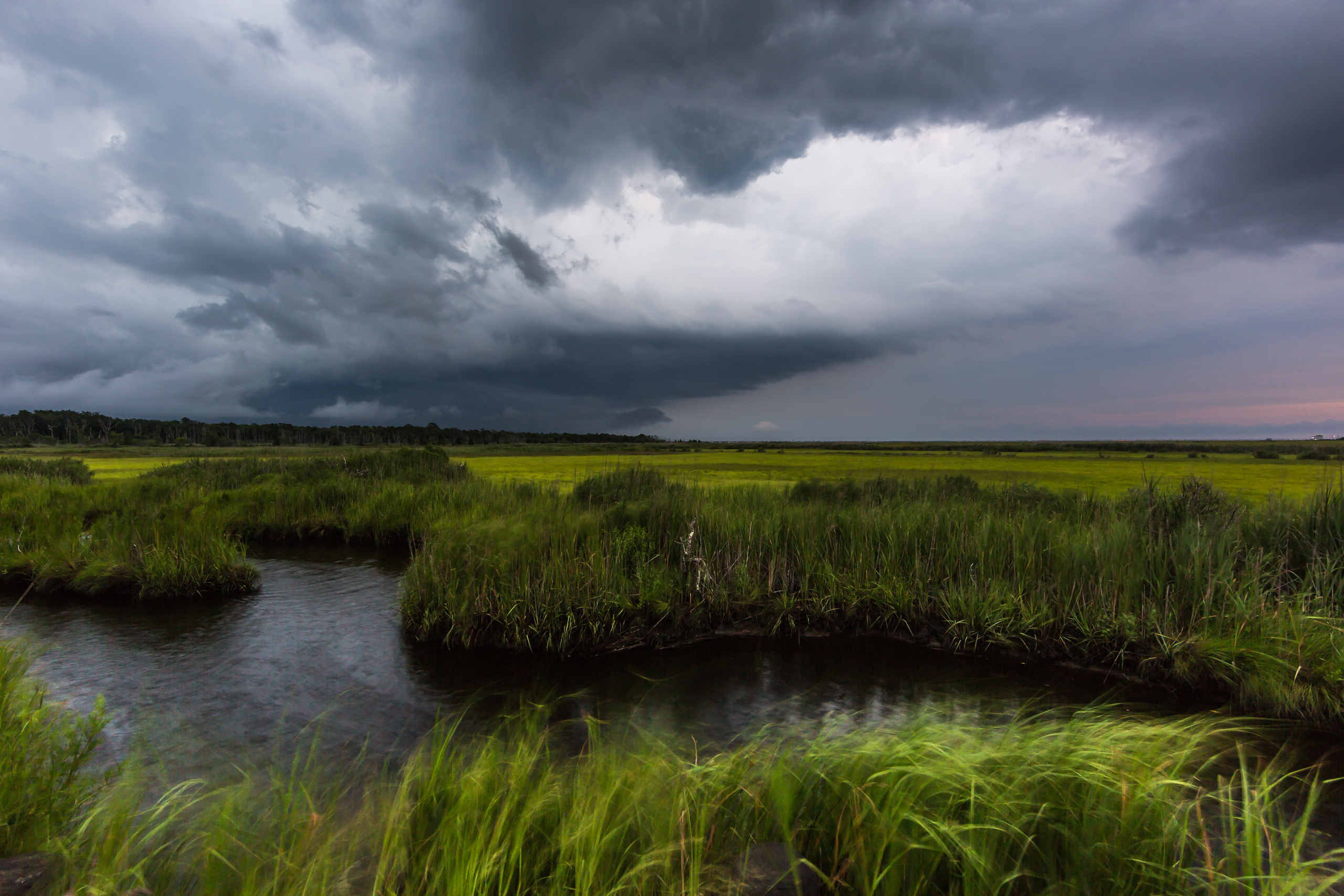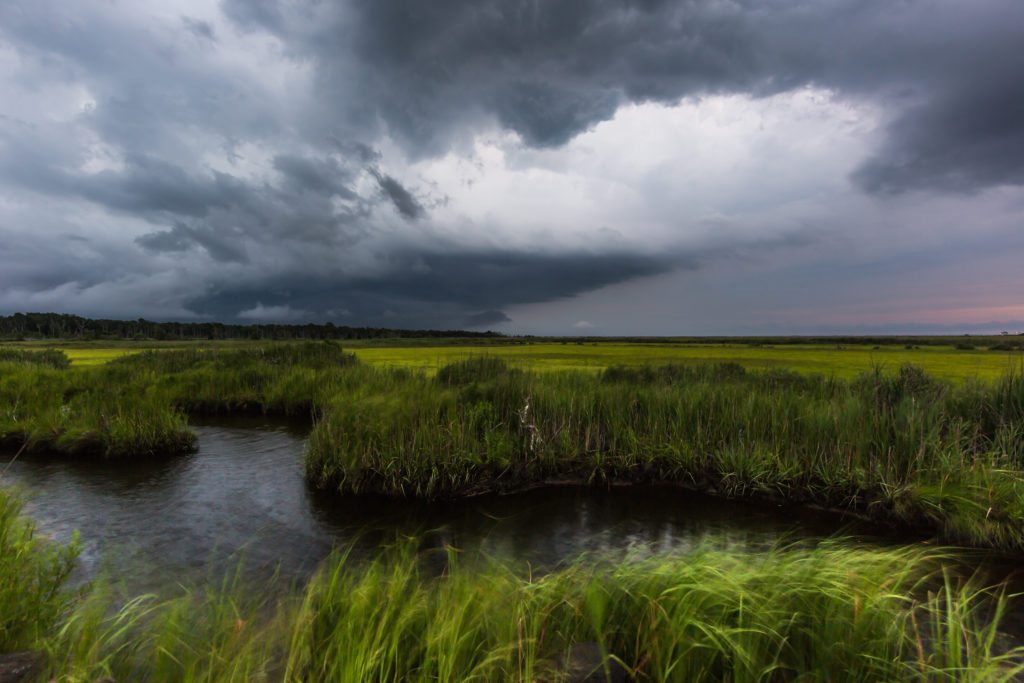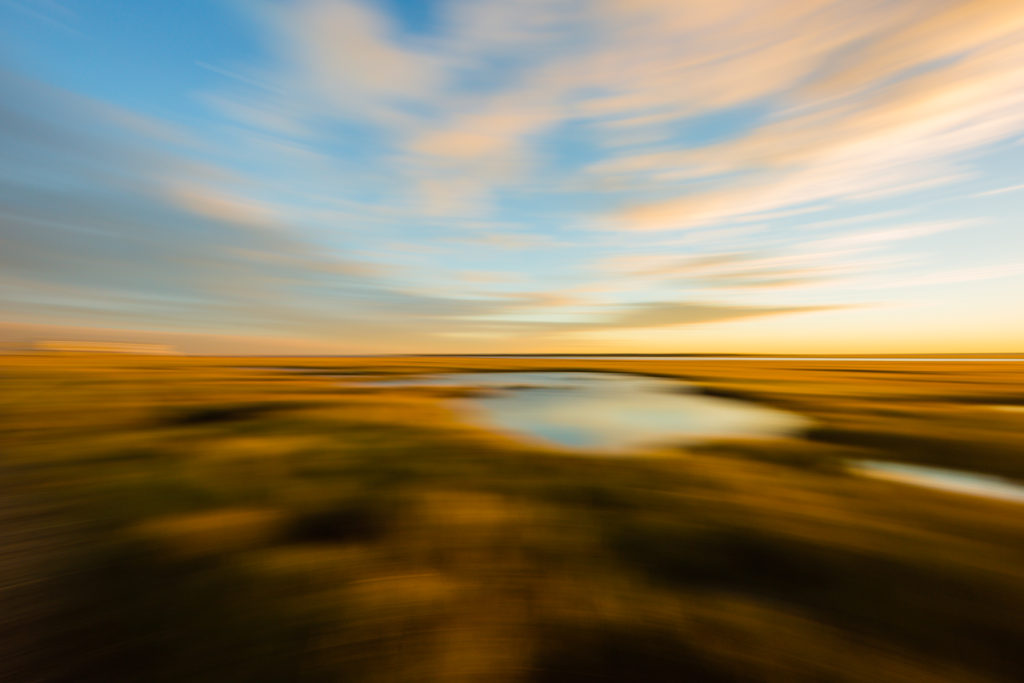
Your eyes do not deceive you. This is a blurry photograph. Its execution by design. Why? you may ask. While the question gets right to the heart of it, my answer makes up with simplicity what it lacks in profundity. Personal style. As simple as I like it. Every now and then when I am out shooting I will take the camera handheld, hold it out in front of my chest at a comfortable arm’s length, and rotate at the hips panning from left to right parallel to the horizon at an even pace. During the rotation I will depress the shutter to create an image that introduces motion blur, intentionally removing sharp focus from the exposure.
While it’s hard to articulate exactly why I like this atypical landscape I think it comes down to a few attributes. First is movement. Motion blur adds a rotational element giving the viewer a sensation of spin. Look up at the clouds. Do you see the parabolic swoop from left to right that plunges downward toward the horizon at the center of the photo? Good. Notice how its inverse arcs with a rainbow arch at the bottom of the frame? Perfect. If you drew a line vertically in the center of the photo it would appear as though this image is spinning like a top. Reflective of the earth itself spinning about its axis. For me it’s a photographic reminder that we’re all objects set constantly in motion.
Second is form. When you strip away a photograph from its sharply focused constituent parts you’re left with its raw elements. Its shape. Its essence. With the sharpness gone you don’t have to become bogged down in the details. Instead I invite you to take in the elements of the photograph on a more holistic level. What do you see in this photograph even though you can’t see it well? The clouds? The tide pool? Or is it a pond? Is that marsh? A wheat field? Or something else? How does your mind fill in the details? I suspect our answers may differ as our own preconceived notions will render this image to our own bias. Is that a house to the left on the horizon? A car? Maybe a boat? These questions, are they necessary or are they beside the point? Like this photograph the answer is purposefully blurred.
Interested in buying? Purchase
